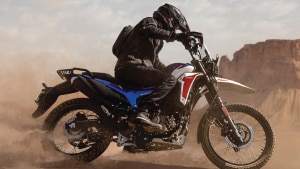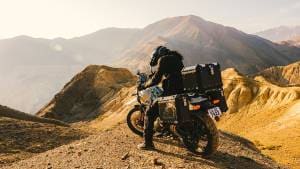Comparison test: KTM 390 Adventure vs Royal Enfield Himalayan BSVI vs BMW G 310 GS vs Hero Xpulse 200
Earlier this year, KTM gave India the much anticipated and wished for 390 Adventure a motorcycle that is being considered as a do-it-all in the entry-level range. Coming from a brand like KTM that has been succeeding at Dakar championships for 18 years, followed by its successful widespread presence in the country, the 390 Adventure has nothing but victory written all over it. But then you can't be declared a hero without proving your worth as it's not who you are underneath, but what you do that defines you, said Batman.
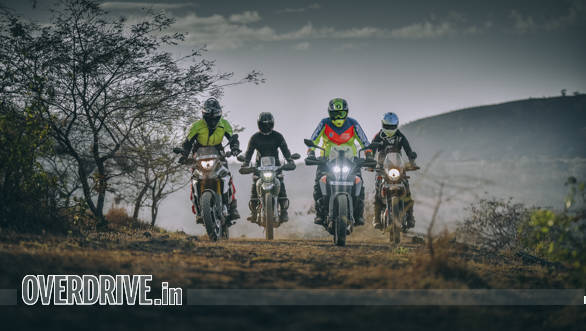
Enter the BMW G 310 GS. The most accessible ADV from the German manufacturer that claims to pack in all the goodness that is associated with the GS in a smaller package. The next challenger to the 390's supremacy is the Royal Enfield Himalayan, which is a popular choice among tourers. And lastly, we have also added the Xpulse 200 to this mix. Yes, it is the smallest and the most affordable dual-sport compared to the other three, and costs a fraction of the price, but then remember what David did to Goliath?
The way they look
When I asked a couple of riders, both young and seasoned, what is it that they look for in an adventure motorcycle, there was almost a unanimous reply that it should look BIG. They should have a strong street presence, said one enthusiastic soul. I then asked them to pick a motorcycle from our line-up just on the basis of looks, and it was the BMW G 310 GS. In fact, one of our crew members even insisted on being clicked only on the GS. Giving the GS a distinct look, is that imposing design paired with a muscular fuel tank, long travel front forks finished in gold and the inherent tall stance. We, however, feel that it looks more like the larger GS', and should have at least got a set of asymmetrical headlights, to complete the look and stance of an adventure Bimmer.
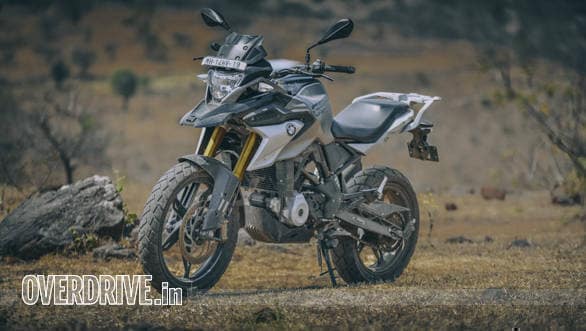 The BMW G 310 does not only look the part of a proper ADV but also comes with the most useful tail rack for added practicality. Can easily accommodate tail bags of any size
The BMW G 310 does not only look the part of a proper ADV but also comes with the most useful tail rack for added practicality. Can easily accommodate tail bags of any size
KTM has nailed the "bigger sibling inspiration" aspect of design with the 390 Adventure. When you look at the 390 Adventure from front, the differences between the Duke and Adventure are minimal. However, when you shift towards the side, you realise that the 390 Adventure is a much larger motorcycle. It is a very well put together design that strikes the right balance between style and practicality. Adding to the cool factor are the all-LED lights, crash protection bars and knuckle guards offered as standard.
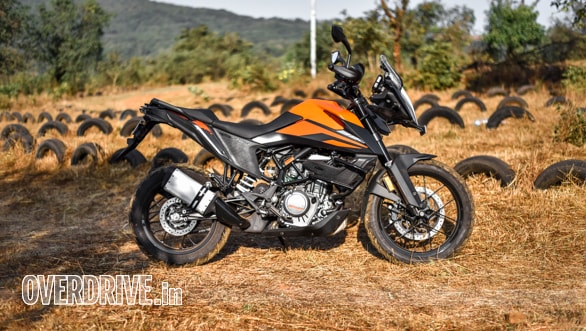 KTM has nailed the "bigger sibling inspiration" aspect of design with the 390 Adventure
KTM has nailed the "bigger sibling inspiration" aspect of design with the 390 Adventure
What I particularly like about the design of the Hero Xpulse 200 is its simplistic enduro styling. It gets a commanding stance with the 21-inch front, off-road fender and a ground clearance of 220mm, that's more than the 390 Adventure and in line with that of the GS and the Himalayan. If you are someone who prefers a boxy design simply because of its purpose-built and functional design, you too will appreciate the RE Himalayan's simplistic industrial design. The brief given to the designers, we believe, was more on the lines of "Make something that can endure any terrain and we shall call it the Himalayan". Even with a minimalistic theme, the Himalayan enjoys a strong street presence.

Features
At the cost of embarrassment, I remember spending a good time decoding the numerous options on the R 1250 GS, a mothership of an adventure motorcycle (which, I am sure also has a hidden option to shoot missiles). On the G 310 GS, however, all you can do is access basic trip information on the LCD screen and switch off ABS. Surprisingly, the inexpensive Hero Xpulse 200 comes with more features the compact LCD screen offers smartphone connectivity (via Bluetooth) for telephony and navigation, along with an underseat USB charger. On the other hand, the Himalayan gets basic instrumentation, a hazard light switch (that's not present on the other three) and switchable ABS. Additionally, there's a digital compass, which honestly does not add much value. Instead, a USB charging slot would have been a more useful addition.
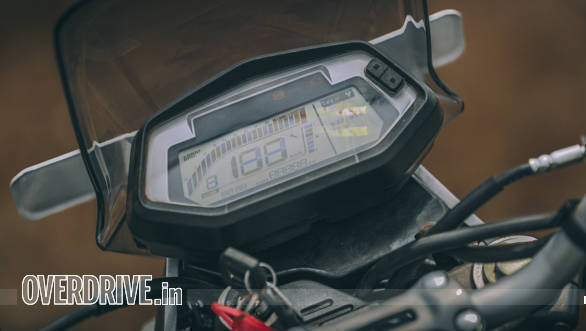
To the extreme end of this panel is KTM who has managed to put in every possible masala to spice up the 390 Adventure. The 5-inch colour LCD instrumentation offers a completely customisable display. In default view, it will show the essentials of the trip data, phone battery and signal status, followed by the status of traction control and ABS. Dab the controls on the left and you can activate/ deactivate the traction control, ABS modes (Road and Off-road) and also quickshifter function. Further, you get Bluetooth connectivity for phone and headset to attend calls, change tracks, control volume and turn-by-turn navigation using the paid KTM My Ride app. So many options on a motorcycle of this size and class, is absolutely mind-blowing.
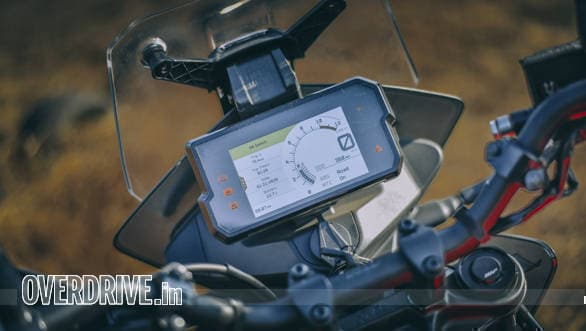
Get the motor runnin'!
We decided to put these four motorcycles through different scenarios where they will be spending their lives, with a road trip. My first weapon of choice was the KTM 390 Adventure, because more power meant that I won't be the last rider in the convoy, whereas Omkar hopped on the Hero Xpulse 200 as both of them related with each other in size and form. Sumit chose the BMW G 310 GS while Tushar chose to ride the RE Himalayan.

The short stint on the 390 Adventure during the first ride, gave me some idea of this mini ADV's performance. Compared to the 390 Duke, the Adventure does not deliver immediate power as it has a more tamed response, which we believe is because of the additional 13kg. However, the engine makes enough juice to slip through traffic. One has to just make sure the revs are in the mid range and with the right throttle input, I was ahead of the other three. The new dual fan cooling system works efficiently with low engine temperatures.
Even while riding through stop-go traffic, not once did the engine stall or heat up. It is on the highway that one can truly enjoy the 390 Adventure's peak performance, especially passing the 5,000rpm mark. All I had to do was open the throttle wide and my colleagues began to disappear in my mirrors. The engine comes in its element at the 5k rpm mark with the swift power delivery, reaching triple digit speeds with great ease. Even the roll-on acceleration doesn't take much effort to overtake the vehicle ahead. Adding to that is the quickshifter that works just fine in the 4,000-8,000rpm range. The 390 Adventure returned 44.09kmpl in the city and 43.24kmpl on the highway. As you go faster, in the top end range, the fuel efficiency figures decline rapidly.

Omkar, clearly, was having issues keeping up with Mr. Orange, as his Xpulse 200 makes less than half the power and torque. But to his advantage, the Xpulse 200 is the lightest and so was he among the four of us! The linear power delivery does not offer an enthusiastic bottom end, much-needed to deal with city traffic. Omkar wasn't bugged much as he prefers commuting at reasonable speeds. The 200cc motor offers a fuel efficiency of 48kmpl in the city and 40.83kmpl on the highway. He mentions that the engine feels nice and smooth in lower revs. It is only when you push the Xpulse 200 further, which he was doing to catch up with Mr. Orange, that the strain on the engine is evident, resulting in vibrations and also a decline in FE. But then, he did manage to find his sweet spot cruising at speeds of up to 95kmph. Taking a dig at the KTM's quickshifter performance at higher revs, Omkar assured me that the gearbox offers smooth shifts irrespective of the RPM.
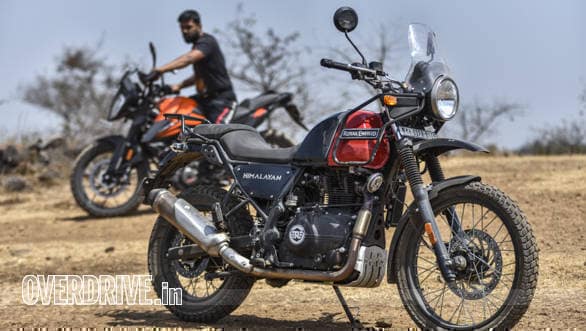
Unlike the rest of us, Tushar likes to take it easy and does not believe in chasing, which went well with his RE Himalayan. As part of the BSVI update, RE claims to have made the engine smoother, which has indeed reduced the vibrations at lower revs. The Himalayan for sure is better at commuting in the city as compared to the Xpulse 200 with its higher power and torque figures. The shifts, though, aren't as smooth as that of the Hero. But what impressed Tushar the most was RE's low end torque which he described as "ekdum kadak". It is all good till 5,000rpm, where the vibrations tend to seep in to the handlebar, fuel tank and even the footpegs. On the highways, the Himalayan can easily do sustained speeds of up to 105kmph-110kmph. It offers better confidence while overtaking compared to the Xpulse 200, with the only downer being the lack of a smooth-shifting gearbox. It returned a FE of 40.5kmpl in the city and 33.37kmpl on the highway.
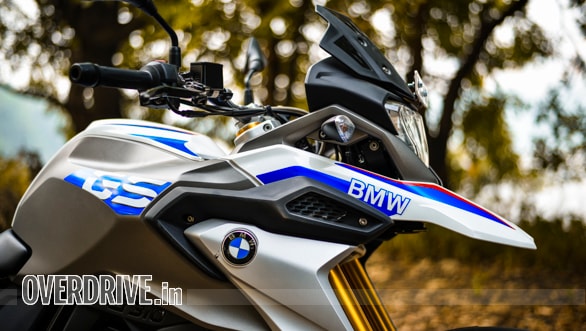
Sumit and I weren't exactly competing in the city, but there were moments where we were trying to be ahead of each other. More like an unannounced competition. The G 310 GS, however, was behind the KTM 390 Adventure in majority of the situations. While the GS does set off from standstill in a much more confident manner compared to the Xpulse 200 and the Himalayan, it still feels underpowered compared to the 390 Adventure. While Sumit was clearly ahead of Omkar and Tushar, he was finding it difficult to close in on the gap with the 390 Adventure in city traffic. On the highways, the GS feels better than in the city. The minor vibrations on the handlebar and pegs tend to diminish with higher speeds. Maintain a constant 6,000-6,500rpm, and you will be comfortably riding at speeds of 120kmph. It is only when you want to go at an even higher speed of say 130kmph that the vibrations return, to your discomfort. The city FE figure for the GS stands at 32.5kmpl while that on the highway is 37.2kmpl.
Touring credentials
I am sure most of you who are planning to get one of these motorcycles have at least thought of taking them to Ladakh. While we could not take them all the way there, we made sure that all of them were tested in a similar setting. After leaving the city limits, we got divided into two groups 390 Adventure/G 310 GS and Himalayan/Xpulse 200.
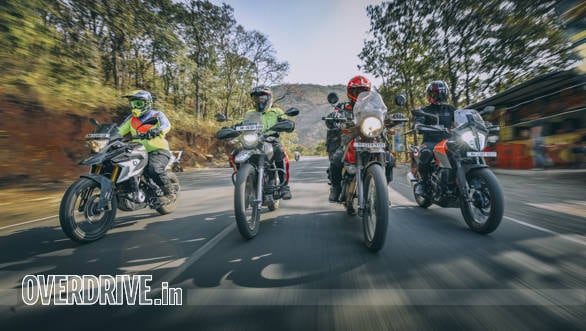
On the 390 Adventure, wide handlebars, recesses around the fuel tank to accommodate larger riders and wide mirrors were to my liking. The fact that the 390 Adventure has gained length over its streetfighter naked sibling, offers a more spacious seating for both rider and pillion. However, the seats are towards the stiffer side which could make longer hours on the saddle a tad difficult. The tall seat height of 855mm did take some time for me to get used to. At 6 feet 1 inch tall, my feet were firmly planted but that was not the case with Omkar (5 feet 8 inch) who was tiptoeing. Further, in its stock form, it does not get a tail rack, which means either you opt for panniers or an aftermarket tail rack for carrying luggage along with the pillion. The other most important part of an ADV has to be its touring range. At speeds of up to 90 to 100kmph, the 390 Adventure hinted at a touring range of 560-575km, but most 390 riders tend to ride at higher speeds on the highway and that will bring down the range to around 350km.
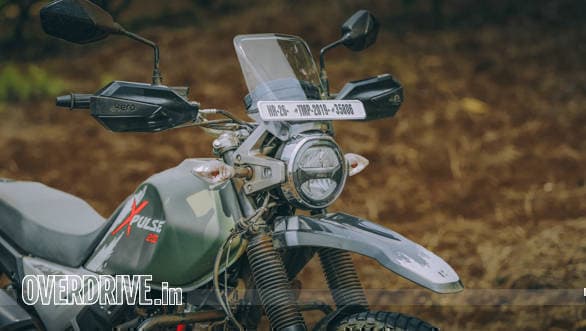
The Hero Xpulse 200's narrow profile and smaller rider triangle is clearly not suited for larger riders like myself on longer journeys. And that is primarily because of the cramped position and seat design that don't feel as comfortable as other motorcycles, for its slender form. Commuting in the city is manageable but on highways, the ride does get tiring after 200-250km, which was experienced by all four riders. The pillion comfort is the least on the Xpulse 200 with the smaller seat. It does get a small tail rack but that does not offer enough space to mount tail bags. Further, the Xpulse 200 does not offer mounting points. Similar to the KTM, one has to opt for an aftermarket solution. Following the 390 Adventure, the Xpulse 200 delivered an overall range of 520-540km in one full tank, cruising at speeds of up to 100kmph. We estimate the worst to be between 425km and 450km.
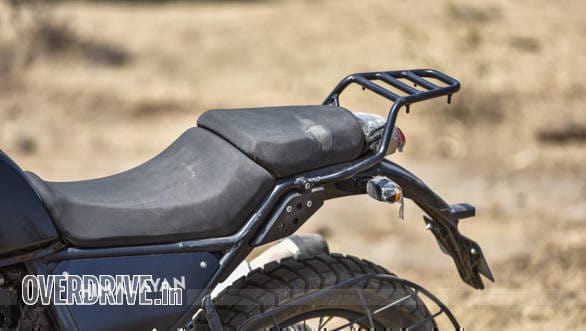
And then came our favourite of the lot, in terms of practicality, the RE Himalayan. RE has got it bang on with the tall handlebar position, upright seating and importantly, the most comfortable seats for the rider and the pillion in this category. They are roomy, wide and offer the most relaxed riding experience, referred to as sofa-like by Omkar, much-needed during longdistance touring. Further, the Himalayan offers multiple mounting points giving the flexibility to strap different sizes of tail bags. A larger tail rack could make it even more practical. We managed to squeeze out a real-world touring range of 510- 525km on the Himalayan, which it does with more comfort compared to the Xpulse 200. The least we expect is a range of around 375km.
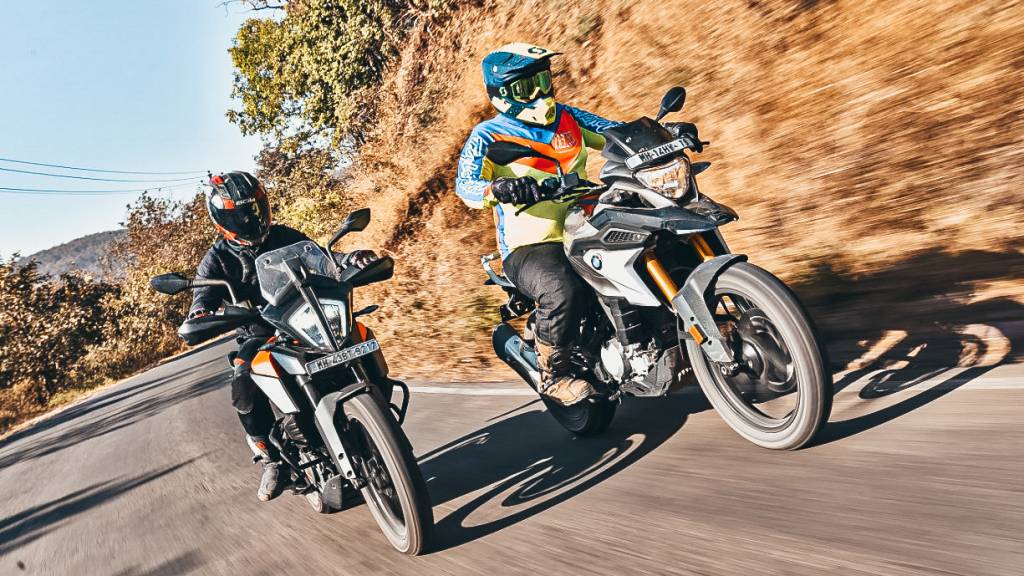
Sumit, who was putting more mileage on the G 310 GS, rated the BMW over the 390 Adventure, with the more touring-friendly upright seating position and seating comfort. In fact, he also believes that on the GS, he can travel for longer distances as compared to the 390 Adventure. The GS gets the most functional and sturdy tail rack of the four, offering enough space to mount different sizes of tail bags. And that's what we did, by alternatively strapping a 73.52-litre Invictus Ride Marshall and the 35-litre ViaTerra Raptor (Product review on page 172). In terms of touring range, the G 310 GS offered the lowest in the range of 330- 340km but a gentler throttle usage could up the range to around 500km on a tank full.
Riding on the trails
The four of us reached our destination a hardcore off-road trail, which was unlike the territory most of these motorcycles will ever witness. To help us evaluate the off-road potential, we invited off-road enthusiasts, Suraj Giri and Nakul Llawe.
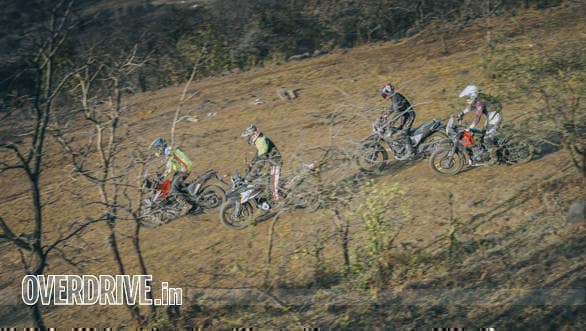
Taking the 390 Adventure first, Suraj seemed more confident than I was during my first ride. He seemed to appreciate the 390 for its wide handlebar offers room to play around the trails, but some of us thought that it should've been positioned higher. Further, the tank design makes it difficult to grip the motorcycle while off-roading. The WP suspension set-up was doing its best in absorbing the impact over the rocks and also offered the plushest ride quality compared to the others over uneven roads and broken surfaces. Offering total control were the Bybre disc brakes, which offer a strong bite, and the fact that one alters between on-road and off-road ABS makes it more flexible. Both the riders believe that the addition of spoke wheels could increase the confidence off-road as they are more flexible compared to the cast wheels and can sustain impact damage.
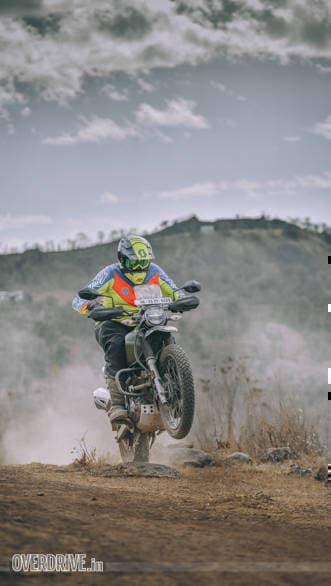
Suraj and Nakul have been doing serious off-roading for many years on the Impulse. It was interesting to see their take on the Xpulse 200. Within the first 200 metres of riding, Suraj had a wide smile, which was essentially a "this-is-it" moment. The 21-inch wheels and the long travel suspension were going places that none of the bikes went into. Even CS Santosh swears by it. The set-up also does a fine job while tackling potholes in the city. The brakes, however, do not offer as much feedback and the fact that it does not come with switchable ABS makes it less convenient off-road. However, the Xpulse 200 was right at the top for our off-road Heroes who couldn't get enough of this mountain goat.
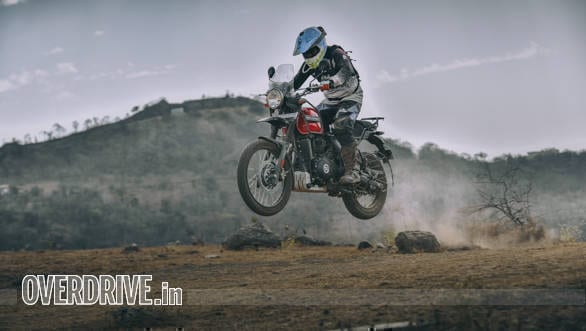
A motorcycle that's called Himalayan has to put out an impressive show on this terrain. And it rightly did, to a great extent. The tall handlebar position ensured that a taller rider like me could stand easily by gripping the fuel tank. I saw Nakul take the Himalayan to the top of the trail in a slow and steady manner, thanks to the long travel suspension and the steady torque at lower revs. The braking performance was definitely better than the Xpulse but the weight of 199kg was making it difficult to swiftly change lines while going on the top. Also, the switchable ABS was inconsistent as there were occasions when it refused to activate. What impressed us is the strong build quality of the Himalayan. Even after taking a bunch of falls, there wasn't any substantial damage. Seeing these riders make the heavyweight RE Himalayan jump that high was surely a sight to be witnessed.

Considering the rich pedigree of the GS, all of us were keen to witness the 310's performance on a trail like this. Suraj and Nakul's initial impression of the 310 GS was positive as they believe it has a better ergo for off-roading compared to the 390 Adventure. At the start of the trail, both the 310 GS and 390 Adventure offer a similar performance with the weaker low-end grunt. Also, the GS is 17kg heavier than the 390 Adventure. However, Suraj appeared to be more confident on the GS as he was putting it through more tricky situations, where he couldn't take the 390 Adventure. He said the comparatively longer travel suspension and higher ground clearance makes the GS a more capable offroader. Similar to the KTM, wire-spoke wheels could increase the confidence of taking the GS off-road.
Verdict
If riders like CS Santosh and Ashish Raorane have been influencing you to get into serious off-roading, the Xpulse 200 is the perfect way to start, without spending a bomb on a hardcore dirt bike. Additionally, it will obediently do your mundane chores. However, it is no match to the RE Himalayan in terms of value. For a premium of Rs 1.02 lakh over the Xpulse 200, you get a larger, safer and a much more practical motorcycle that will comfortably do city commutes and at the same time can efficiently munch on miles with ease and also do decent levels of off-roading, making it a better overall package to live with at Rs 2.30 lakh.
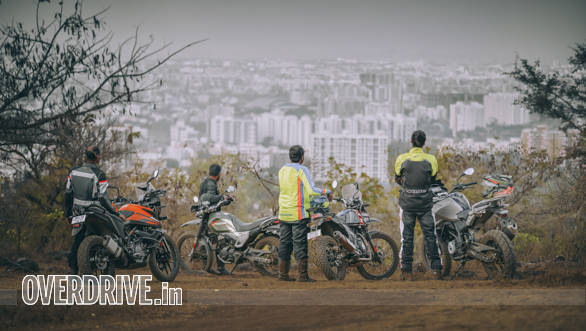
In fact with all these merits, the Royal Enfield Himalayan comes across as a better offering compared to even the BMW G 310 GS priced at Rs 3.49 lakh, wherein the latter does score more on premium appeal of the BMW brand and off-roading capability. But then the ownership experience of a Royal Enfield is far more affordable than that of the BMW.

However, if you are willing to spend Rs 1.28 lakh over the Royal Enfield Himalayan, we definitely recommend the KTM 390 Adventure for its sharp design and extensive electronic suite that's offered in motorcycles worth Rs 15 lakh and with a performance like no other in its class and even above. The vast dealership and sales network ensures a stress-free ownership experience compared to that of the BMW. All of this makes the KTM 390 Adventure the best entry-level ADV motorcycle in India.

Also see: Adventure Motorcycle Mega-test - everything from the XPulse to the R 1250 GS compared!
allow="accelerometer; autoplay; encrypted-media; gyroscope; picture-in-picture" allowfullscreen>
Starts Rs 2,99,000
373cc
6-Speed
44.00
37.00
-NA-
